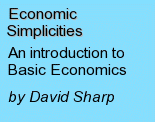




Introduction to Economics Lesson 08 / 08
INDIA
With an area
of 3,287,590 sq.km. India is the seventh largest country in the world.
Its population of approximately 1.132 million is, after China,
the world’s second largest. It
is presently one of the 4 large, rapidly developing economies, often
referred to collectively as BRIC; Brazil, Russia, India and China.
In terms of
modern development, India is often referred to and seen as number two,
compared to China’s ranking of number one. Although on most economic
criteria China presently ranks ahead, a significant number of economists
predict that in the medium term, possibly by 2050, India is likely to
surpass it.
India is a
federal republic comprising 28 states and 7 territories.
Depending on the measure used, calculation of the size of the
present Indian economy ranges from as high as the world’s fourth
largest, to as low as the twelfth.
Its annual rate of growth however is approximately 9%, second to
China at approximately 11%, but at least three times that of the USA and
most other major developed nations.
India is
sometimes referred to as a sub-continent.
As such it is a place of considerable diversity.
It contains within it four significant language groups, 2 major
and 2 minor, and a variety of races, religions and cultures.
[The 2 major language groups are Indo-Aryan, largely in the north
and spoken by about 80%, and Dravidian in the south, spoken by about
18%]. To be an Indian is not so much a matter of a shared ethnicity,
language or race, but rather of a shared civilization, similar to one
being a European or an African.
Estimates of
the number of languages spoken in India vary widely. Depending on the
criteria used the number ranges between 100-400.
Significantly, unlike China, the different languages are written
in a variety of scripts. The Constitution lists 18 official languages.
Perhaps half the population speaks Hindi, the official national
language, as a primary language, although such primary speakers are
largely concentrated in the north of the country.
English is widely used throughout India. In 1956 a reorganization
of the states took place in order for them to incorporate, within their
respective borders, the various languages, but this has been only
partially successful.
The religion
of approximately 80% of the population is Hindu and 13% Muslim.
Traditionally it has been a rural country but in recent time
considerable urbanization has occurred.
Although incomes generally have increased significantly in recent
times, approximately 27% of the population still survives on less than
US$ 1 a day.
RECENT HISTORY
The Indian
Constitution specifically requires that the country be both socialist
and democratic. Following
independence in 1947, socialism was emphasized for several decades and
the economy was heavily regulated.
This tended to discourage and inhibit economic activity and
business. However, in
recent times since the early1990s, socialism and regulation have, if not
abandoned, been significantly reduced. In a similar but less dramatic fashion to China, India has
opened itself to the world. At
the same time the economic development of India has increased at an
astounding rate.
LIKELY POSITIVES
Presently there exists a number of positive factors that suggest that the economic development of India is likely to continue apace and that bode well for its future. They include the following;
- The population is growing at a fast rate and likely to exceed China’s by 2030. Present population density is 336 per sq.km., 33rd highest in the world after Japan. Unlike China, Japan, and most Western developed countries, average age is becoming younger.
- Widespread acceptance, knowledge and use of English at a fluent level, and a heritage of Anglo-Saxon common law, facilitating interaction with the West and with other English speaking countries.
- Fundamental existing inadequacies in infrastructure, such as in transport and communications, sewage and utilities are being targeted, particularly by government, for improvement.
- A rapidly expanding middle class, estimated to comprise now about 30% of the population, being both a consequence and a cause of economic development.
- A burgeoning manufacturing sector, presently accounting for about 30% of the national economy, and providing major opportunities for overseas suppliers.
- Worldwide demand for its service sector based on an abundance of relatively cheap, well educated and English speaking labour, in areas such as information technology, computer software, medical tourism and offshore call centers.
- An abundance of agricultural land, [about 54% of total area compared to China about 15%], and of natural resources.
- A booming corporate sector, with a number of companies, such as Tata and Infosys, becoming major players on the world stage.
- Large scale foreign investment into India expanding rapidly. In 2007 it totaled almost US$ 20 billion, more than a third more than was invested in China.
POTENTIAL PITFALLS
There are a number of potential pitfalls that could preclude or obstruct India’s future development, including the following;
- A failure to resolve the problem of caste, including that of the approximate 160 million so-called Untouchables, or to achieve a satisfactory national language acceptable to all.
- As is now occurring, a rapid surge in inflation, causing widespread distress, particularly to the more than 300 million poor.
- The outbreak of a major war, possibly involving nuclear weapons, either with Pakistan over Kashmir, or less likely, with China over the Himalayan frontier.
- The growth of break-up or secessionist movements amongst dissatisfied and truculent ethnic or religious groups
- An upsurge in radical Hinduism causing unrest among non-Hindus.
David Sharp
9 June 2008